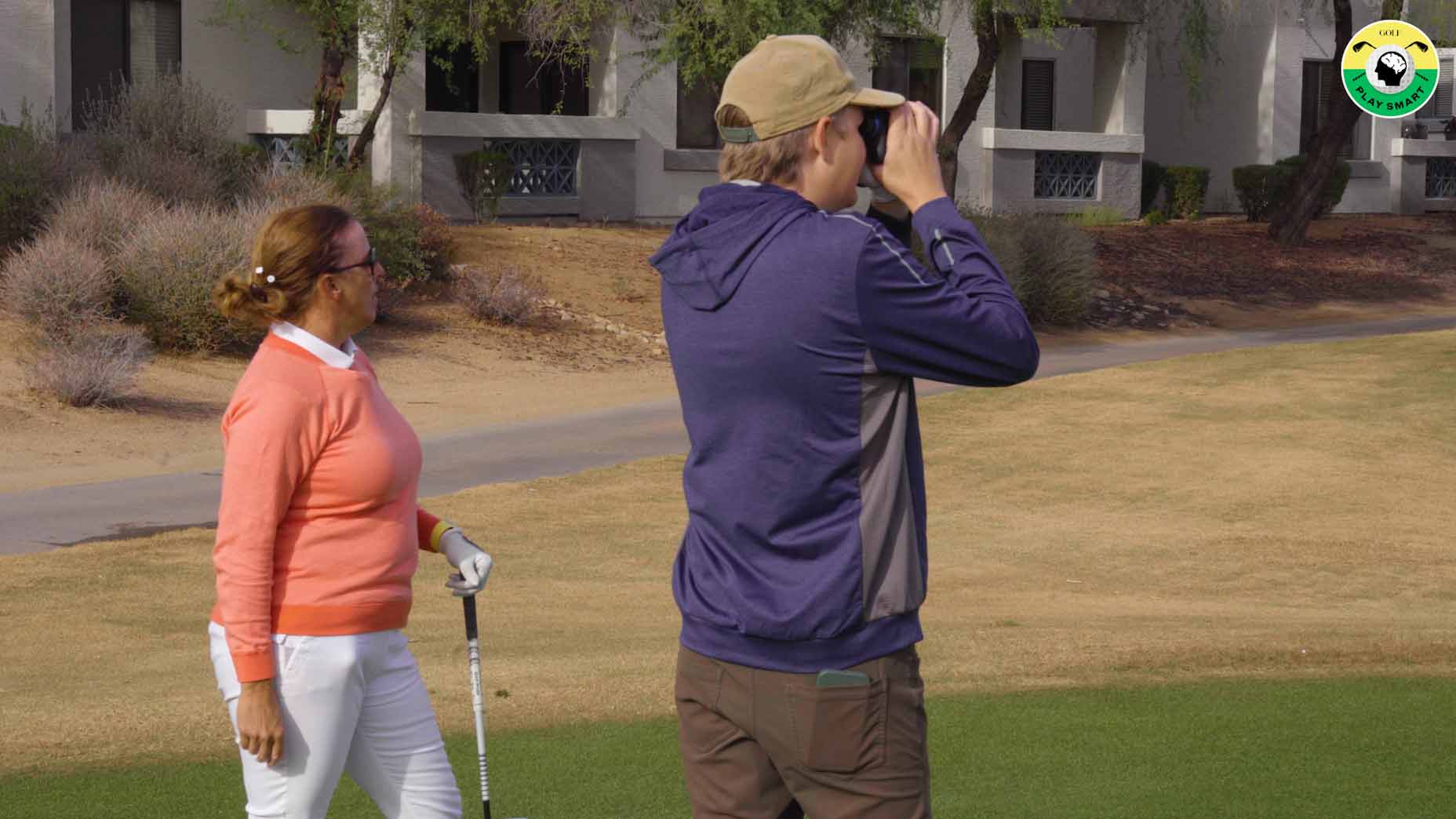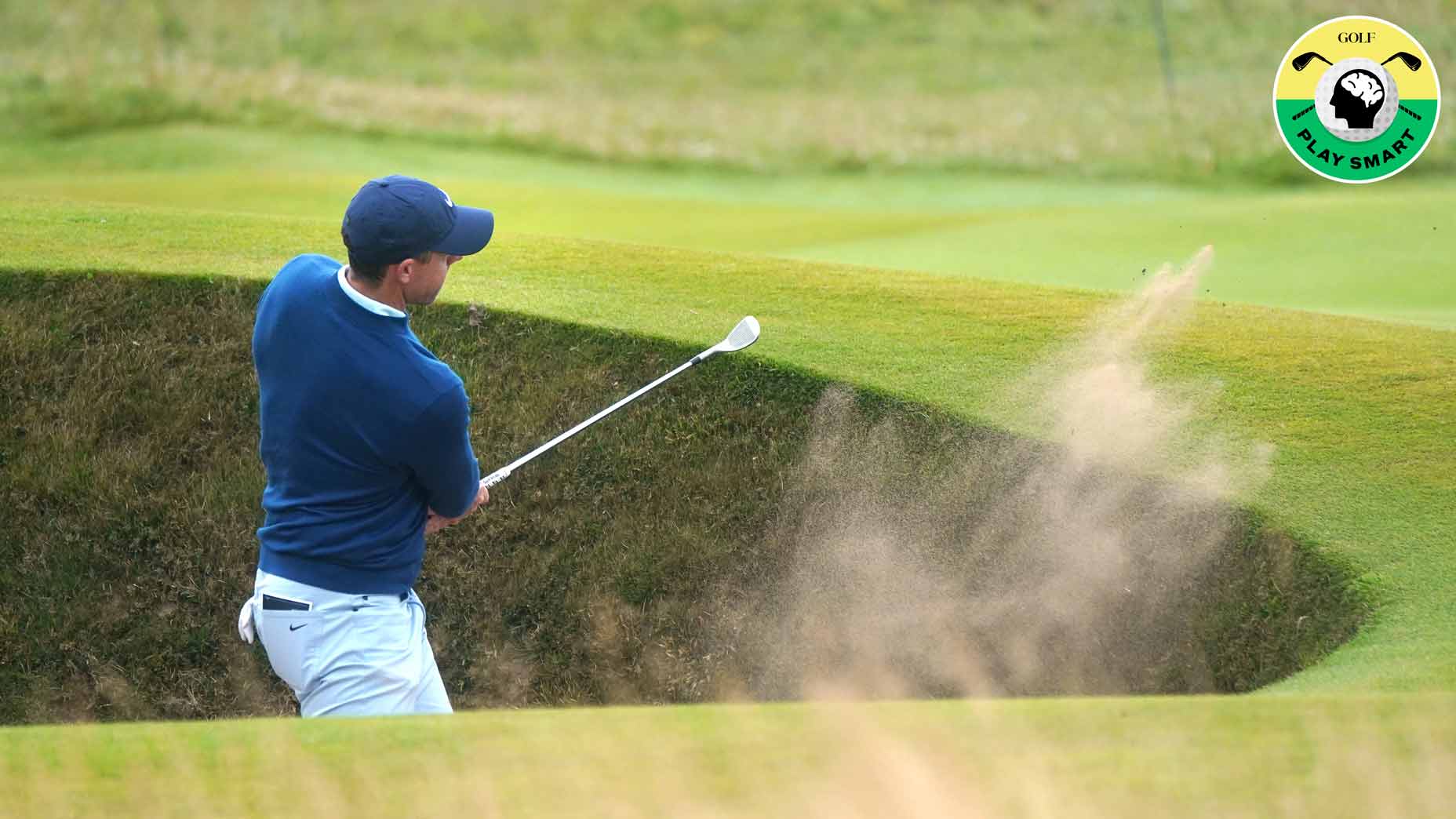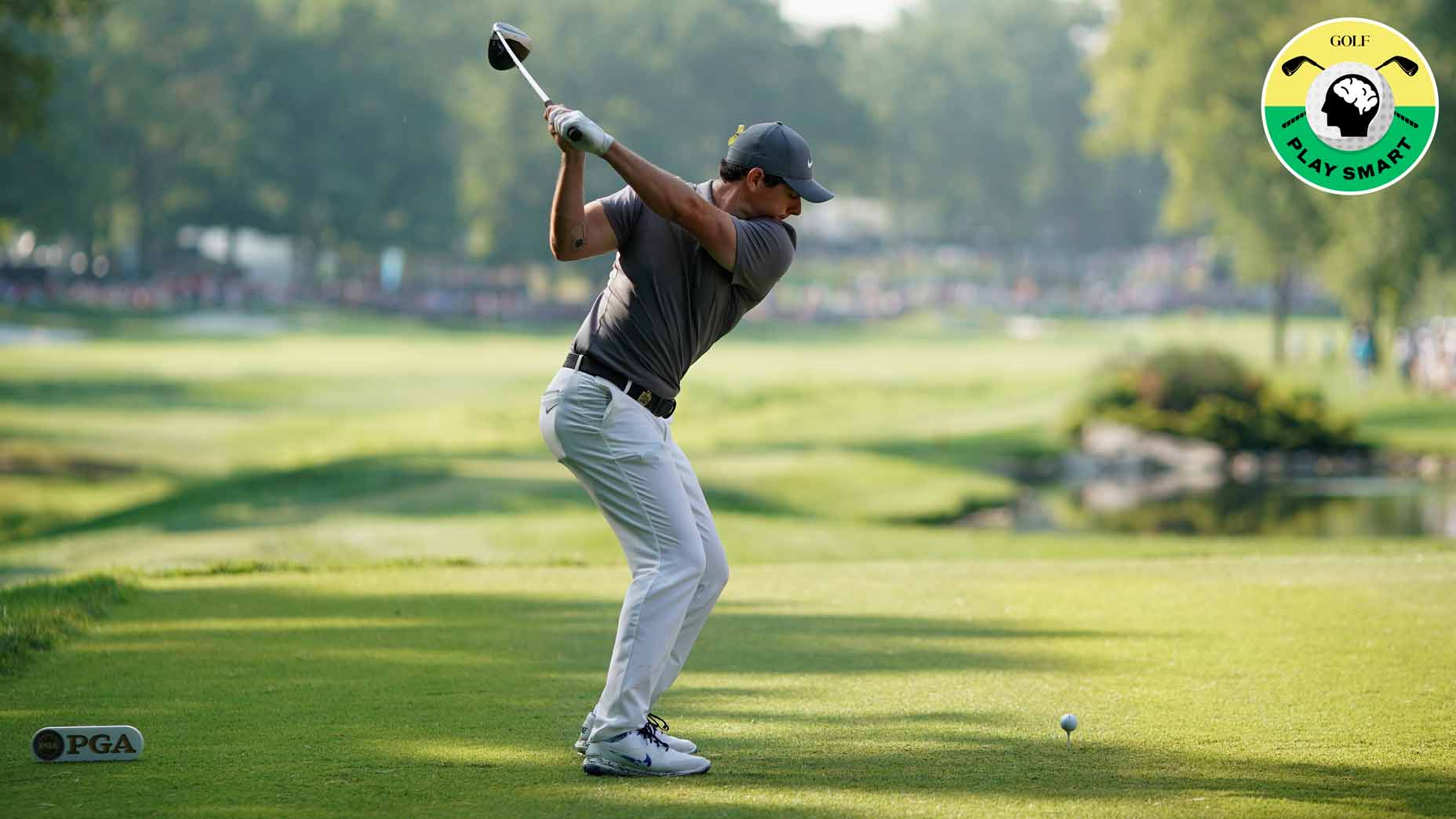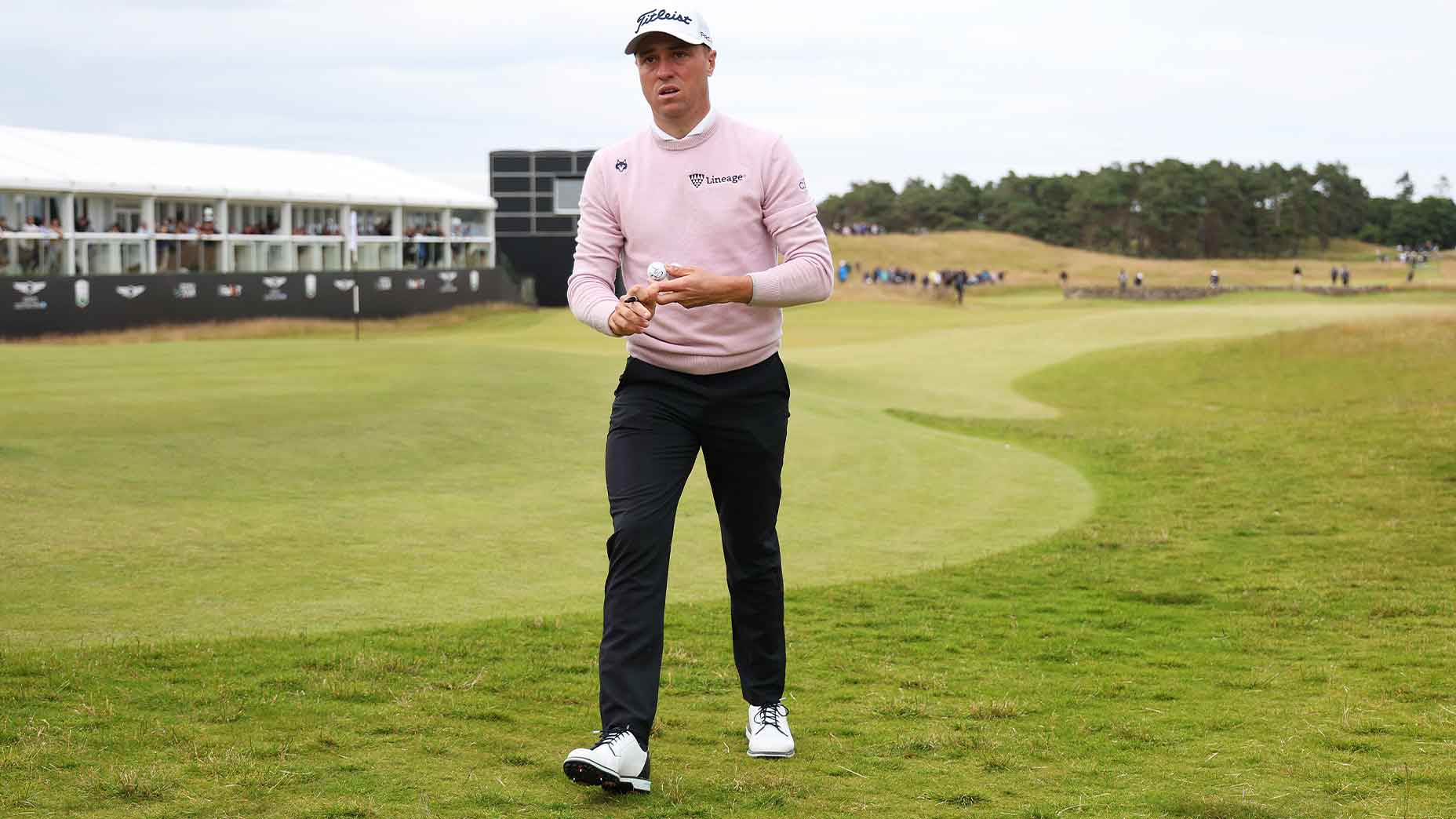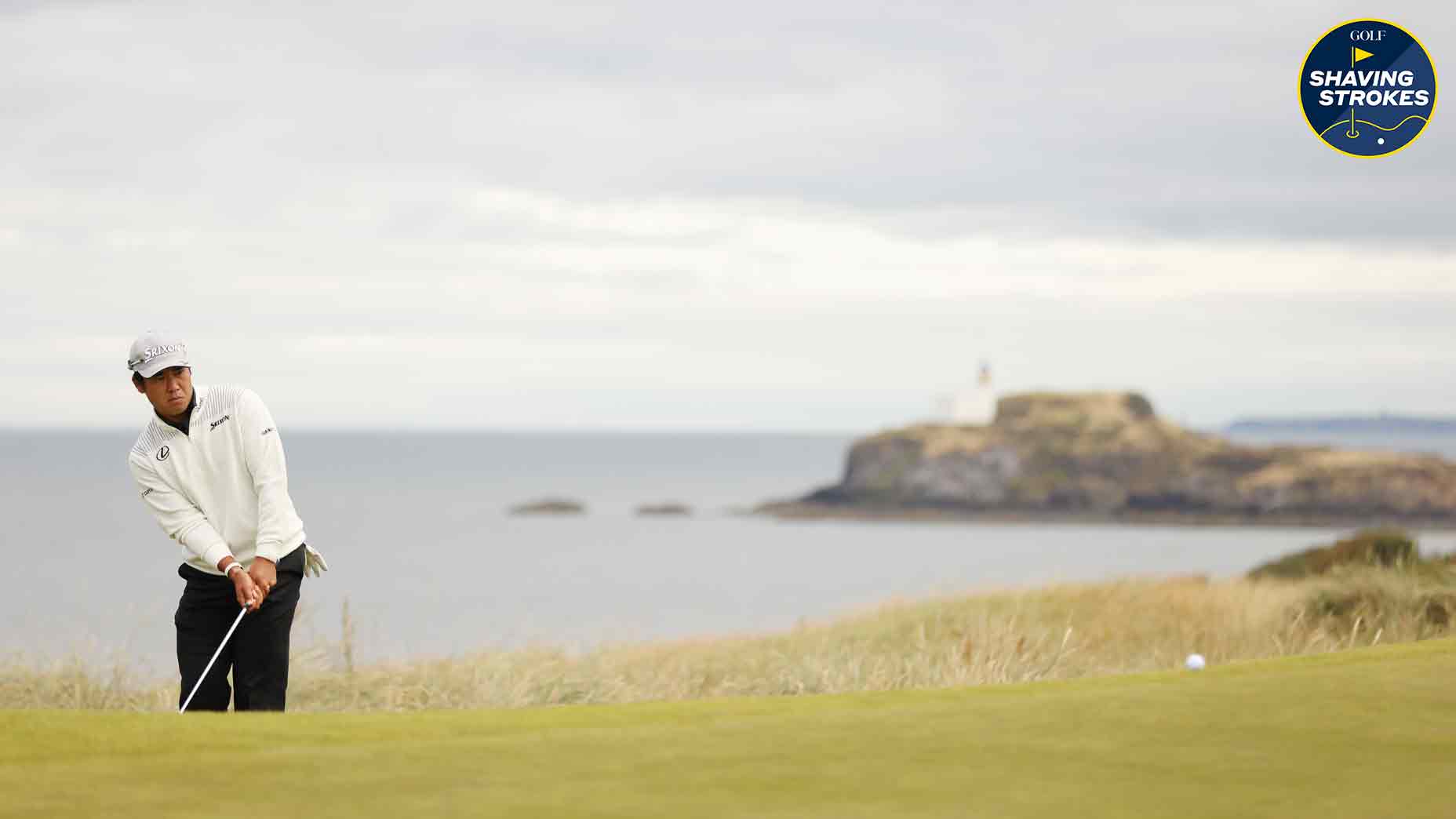Don’t sulk after a bad shot — do this instead
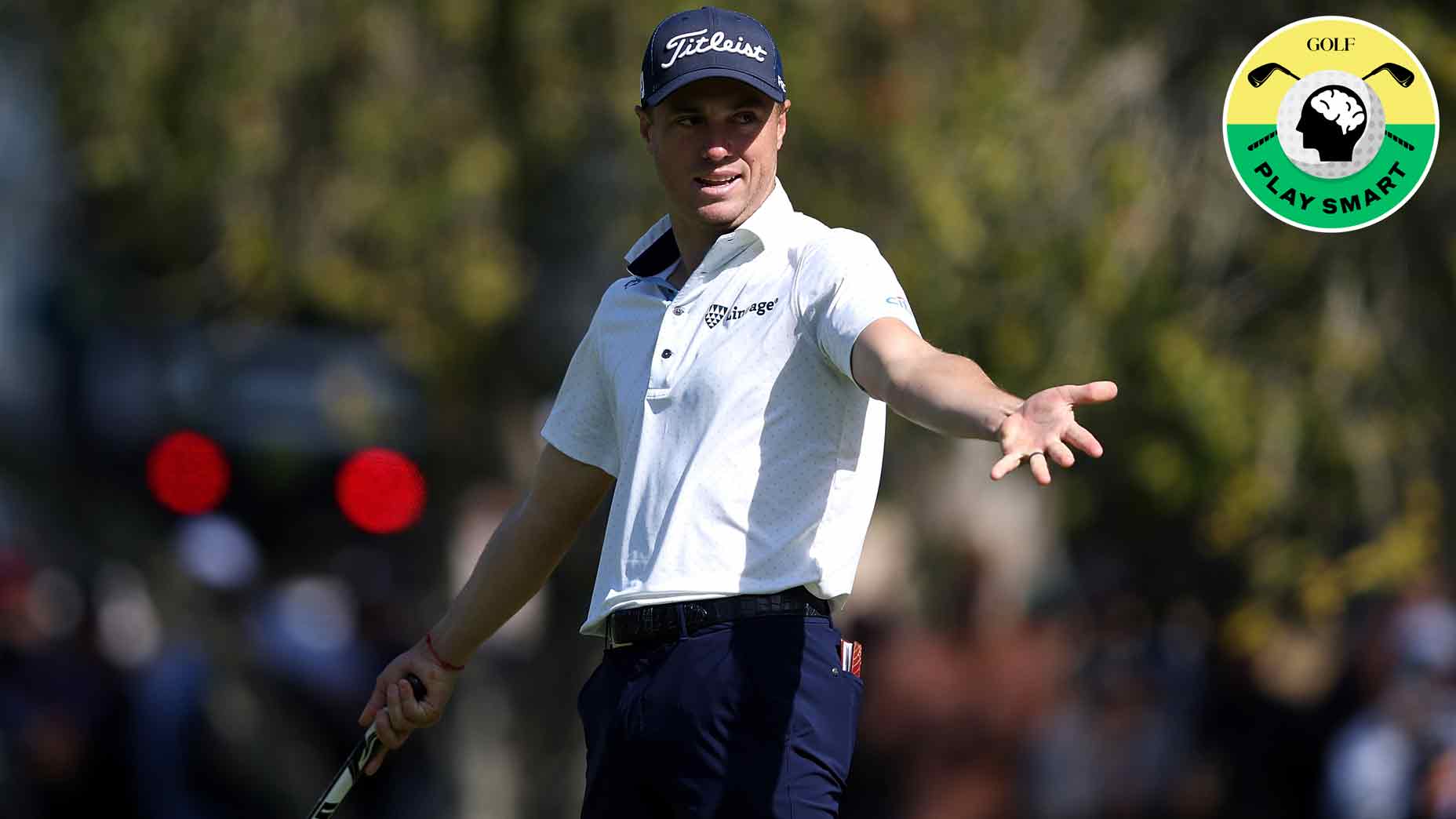
Pros are always learning — even when they hit a bad shot.
Getty Images
Welcome to Play Smart, a regular GOLF.com game-improvement column that will help you play smarter, better golf.
PACIFIC PALISADES, Calif. — Justin Thomas’ shiny Titleist glistened in the California sunshine. It was sitting atop a clump of Kikuyu grass just behind the 8th green. Thomas had only moments before watched in disappointment as his approach shot bounced off the putting surface and into the rough.
With the cup cut just five paces from the back edge of the green, Thomas knew he was in trouble. With little green between his ball and the flagstick, he was short-sided. He’d have to hit the ball just right to get the ball close to the hole.
Thomas selected a high-lofted wedge and went through his pre-shot routine. He surveyed the shot, selected a landing area and made a few practice swings. With an open clubface, he turned his shoulders back and cocked his wrists, flicking them and sending the clubhead into the Kikuyu on the follow through.
The ball came out hotter than he wanted, landing on the green with too much speed. The ball raced past the hole, settling 15 feet past the flag. Thomas was none too pleased, and he tossed his wedge at his staff bag lying on the ground.
But first, he did something that all pros do — and few amateurs even think about.
As his ball rolled past the cup to its final destination, he analyzed it closely. He was watching how it rolled out — with an emphasis on the break — to inform his next shot.
Getting a read of your putt before you stroke it is invaluable information, and that’s just what Thomas got when his ball rolled past the hole. Sure, he would’ve preferred that his ball settled neatly next to the cup, but once that possibility vanished, he changed his mindset. Instead of immediately complaining and pouting about the bad shot, he used the opportunity to gather valuable intel for his next shot.
Keep that in mind next time you hit a chip that scurries past the pin. As it rolls out, you can get a read on your next putt, and — hopefully — it will contribute to a make with your next stroke.


